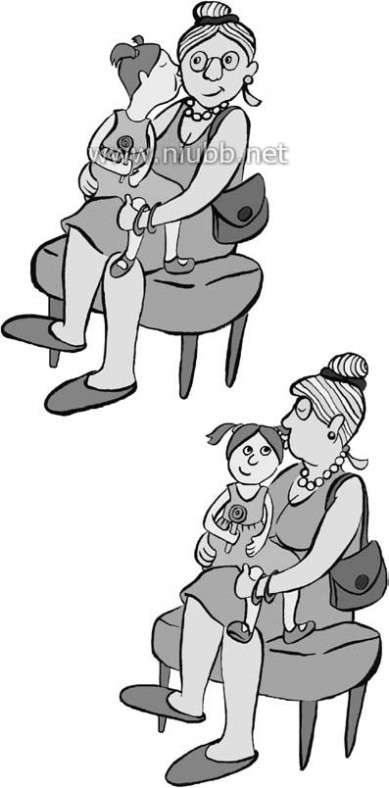一 : despair of 和in despair
despair of 和in despair
两者都有绝望的意思.可是有什么区别么?
despair of 中的despair是动词,of后接名词或动名词,表示“对……绝望”;
in despair 中的despair是名词,整个词组表示一种状态,意为“在绝望中”,后面不接成分.
二 : Suppression of Cotton Bollworm in Multiple Crops in Chin

Suppression of Cotton Bollworm in Multiple Cropsin China in Areas with Bt Toxin??Containing CottonKong-Ming Wu, et al. Science 321, 1676 (2008);DOI: 10.1126/science.1160550
This copy is for your personal, non-commercial use only.
If you wish to distribute this article to others, you can order high-quality copies for yourcolleagues, clients, or customers by clicking here.
Permission to republish or repurpose articles or portions of articles can be obtained byfollowing the guidelines here.
The following resources related to this article are available online at www.61k.comthis information is current as of May 16, 2010 ):
Updated information and services, including high-resolution figures, can be found in the onlineversion of this article at: http://www.61k.comgi/content/full/321/5896/1676
Supporting Online Material can be found at: http://www.61k.comgi/content/full/321/5896/1676/DC1
This article cites 16 articles, 4 of which can be accessed for free: http://www.61k.comgi/content/full/321/5896/1676#otherarticles
This article has been cited by 6 article(s) on the ISI Web of Science.
This article appears in the following subject collections: Ecology http://www.61k.comgi/collection/ecology
Science (print ISSN 0036-8075; online ISSN 1095-9203) is published weekly, except the last week in December, by theAmerican Association for the Advancement of Science, 1200 New York Avenue NW, Washington, DC 20005. Copyright2008 by the American Association for the Advancement of Science; all rights reserved. The title Science is aregistered trademark of AAAS. Downloaded from www.61k.comon May 16, 2010
REPORTS
SuppressionofCottonBollwormdensityofH.armigerawasdrasticallyreduced
withtheintroductionofBtcotton,especially
inMultipleCropsinChinainAreasduringtheperiodfrom2002to2006(tableS1).
Usingstepwiseregression,weevaluatedthecon-
withBtToxin–ContainingCottontributionoftemperature,rainfall,anddeploy-
mentofBtcottononthepopulationdensityof
H.armigerainsixprovinces(Table1).Forallsix
Kong-MingWu,1?Yan-HuiLu,1Hong-QiangFeng,1Yu-YingJiang,2Jian-ZhouZhao1*provincesinnorthernChina,Btcottonacreage
correlatedbestwiththereductioninH.armigera
TransgeniccottonthathasbeenengineeredtoproduceinsecticidaltoxinsfromBacilluspopulations(Table1).Forthesecondandthirdthuringiensis(Bt)andsotoresistthepestcottonbollworm(Helicoverpaarmigera)hasbeengenerations,thedeploymentofBtcottoncon-widelyplantedinAsia.AnalysisofthepopulationdynamicsofH.armigerafrom1992totributedmoretothereductionofH.armigera2007inChinaindicatedthatamarkeddecreaseinregionaloutbreaksofthispestinmultiplecropsdensitythantemperatureandrainfallduringwasassociatedwiththeplantingofBtcotton.Thestudyareaincludedsixprovincesinnorthern1997–2006andwasthekeyfactorforitslong-Chinawithanannualtotalof3millionhectaresofcottonand22millionhectaresofothercropstermsuppressioninallthesixprovincesofnorth-(corn,peanuts,soybeans,andvegetables)grownbymorethan10millionresource-poorfarmers.ernChina(R2=0.41to0.91,P<0.05;Table1).OurdatasuggestthatBtcottonnotonlycontrolsH.armigeraontransgeniccottondesignedtoTheseresultsindicatethattheregionaloccur-resistthispestbutalsomayreduceitspresenceonotherhostcropsandmaydecreasetheneedrenceofH.armigeraoncottonandothermajorforinsecticidespraysingeneral.hostcropsinnorthernChinawassuppressedby
thedeploymentofBtcotton.
TWealsosampledH.armigeraincottonfields
ransgeniccropscarryinginsecticideshaveJiangsu,Shanxi,Henan,andAnhui),coveringfrom1998to2007atLangfangExperimentSta-becomeanimportanttoolforinsectpest38millionhaoffarmlandinnorthernChinationinHebeiProvince(5).Thedensitiesofeggsmanagementworldwideand,in2007,(fig.S1),inwhich3millionhaofcottonand22onBtandnon-Btcottonandlarvaeonnon-Btweregrownonatotalof42.1millionha,ac-millionhaofotherhostcrops(corn,peanuts,cottonwerenegativelyassociatedwiththenum-countingforabout37%ofallthetransgenicsoybeans,andvegetables)werecultivatedannu-bercrops(1).Oneofthese,Btcotton,producesin-allybymorethan10millionsmallfarmers.Our2ofyearsafterBtcottoncommercialization(R=0.52to0.63,P<0.05).ThepopulationsecticidaltoxinsfromBacillusthuringiensis(Bt)resultsindicatedthatboththeeggdensityofdensityofH.armigeracanbedescribedbytheandoccupied14millionhaworldwideand3.8

H.armigeraoncottonandthelarvaldensityonlinearregressionmodel(Fig.3).ThedataalsomillionhainChinain2007(1).Btcottoncanothermajorhostcropswerenegativelycorre-showedthatthedensitiesofH.armigeraeggssuppresspopulationsofatargetpestwithanar-latedwiththenumberofyearsaftertheintro-werenotsignificantlydifferentbetweenBtandrowhostrange,e.g.,pinkbollworm(Pectinoph-ductionofBtcottonintheperiodof1997–2006non-Btcottonovertheperiodof1998–2007(P>oragossypiella)(2),butitslong-termandwider(Figs.1and2).BeforeBtcottoncommercial-0.05)(Fig.3A).However,larvaldensitiesonnon-ecologicalconsequencesareunknown.ization,theH.armigerapopulationwasfairlyBtcottonweresignificantlyhigherthanthoseThecottonbollworm,Helicoverpaarmigera,highoncottonandotherhostcropsovertheonBtcottonfrom1998to2006(P<0.05)(Fig.isoneofthemostseriousinsectpestsofcotton,periodfrom1992to1996.However,population3B),withanexceptionin2007whenthepop-corn,vegetables,andothercropsthroughout
Asia.TherearefourgenerationsofH.armigera
peryearinnorthernChina.Ingeneral,wheatisFig.themainhostcropoffirst-generationH.armigeraH.armigera1.Eggfromdensities1997ofto2006oncottoninnorth-larvae,andcotton,corn,peanuts,soybeans,andernChina.(A)Relationbe-vegetablesarethemajorhostsforsubsequenttweeneggdensityofthegenerations(3).Becauseofitslong-distancemi-secondgeneration(●)andgrationsbetweenprovincesanddispersalamongplantingyearofBtcot-differenthostcrops,provincewideoutbreaksofton.LinearmodelofeggH.armigeraoncottonandothercropsweredensity(blackline),y=commonintheearly1990sinChina(3).Bt157,076.05–78.21x,F=cottonwasfirstapprovedforcommercialuse32.16,dfin1997inChinaandremainstheonlyBtcrop2=1,549,P<0.0001,R=0.06.(B)registered.By2001,Btcottonhadbeenex-Relationbetweeneggden-tensivelyplanted,especiallyinnorthernChina,sityofthethirdgenera-whichresultedinincreasedyieldsandde-tion(●)andplantingyearcreaseduseofinsecticides(4).ofBtcotton.LinearmodelWeconductedlong-termandlarge-scalefieldofmonitoringofH.armigeraduring1992–2007inymultiplecropsinsixprovinces(Hebei,Shandong,F==eggdensity(blackline),
26.42,94,644.36df=1,558,–47.15Px<,
0.0001,R2=0.05.Data
aremeansTSEM.Values
1StateKeyLaboratoryforBiologyofPlantDiseasesandinparenthesesaretheInsectPests,InstituteofPlantProtection,ChineseAcademy
ofAgriculturalSciences,Beijing,100193,People'sRepublicofnumbersofsamplingsites
China.2NationalAgro-TechnicalExtensionandServiceCenter,foreachyear.Beijing,100026,People'sRepublicofChina.
*Presentaddress:PioneerHi-BredInternational,Inc.,
Johnston,IA50131,USA.?kmwu@ippcaas.cnTowhomcorrespondenceshouldbeaddressed.E-mail:
167619SEPTEMBER2008VOL321SCIENCEwww.61k.comownloaded from www.61k.comon May 16, 2010
REPORTS
ulationdensitywaslowandlarvaldensitywasnotsignificantlydifferentbetweenthetwotreat-ments(P>0.05).UsingBtcottonalsoreducedthedurationofH.armigera’sovipositionperiodoncotton,becauseofdecreaseofmothdensity.Threepeaksofeggdensity,representingthesec-ond,third,andfourthgenerations,respectively,weredetectedeachyearfrom1998to2000,andinrecentyears,therewasonlyoneovipositionpeakevidentinthesecondgeneration,andnoevidentpeakingenerations3or4(fig.S2).Theabundanceofeachgenerationandthepeakdu-Fig.2.LarvaldensitiesofH.armigerafrom1997to2006oncorn,peanuts,soybeans,andvegetablesinnorthernChina.(A)Relationbetweenlarvaldensityofthesecondgeneration(●)andplantingyearofBtcotton.Linearmod-eloflarvaldensity(blackline),y=480,293.95–239.28x,F=16.50,df=1,466,P=0.0001,R2=0.03.(B)Rela-tionbetweenlarvaldensityofthethirdgeneration(●)andplantingyearofBtcotton.Linearmodeloflarvaldensity(blackline),y=551,611.74–274.83x,F=21.45,df=1,462,P<0.0001,R2=0.04.DataaremeansTSEM.Valuesinparenthesesarethenumbersofsamplingsitesforeachyear.
rationofthethirdandfourthgenerationsde-creasedlinearlyasBtcottoncommercializationproceededthrough1998to2007(fig.S3).Thus,

alldataindicatethatthecommercialuseofBtcottoninnorthernChinawasassociatedwithlong-termareawidesuppressionofH.armigeraafter10years.
RegionalcontrolofH.armigerainmultiplecropsinChinahasbeenattainedinrecentyearsthroughtheuseofBtcotton.Ourresultssug-gestthatBtcottonledtoreducedpopulationsofH.armigeranotonlyoncottonbutalsoon
otherhostcrops.Thismaybebecausecottonusuallyisthemainhostforthemothsofthefirstgenerationtolayeggsandactsasthesourceofthesubsequentgenerationsonotherhostcrops(6).Btcottonkillsmostofthelarvaeofthesecondgenerationand,accordingly,worksasadead-endtrapcropforH.armigerapop-ulation.Interestintrapcropping,apromisingagroecologicalapproachforinsectpestcontrol,hasincreasedconsiderablyformodernagricul-ture(7,8),butfewtrapcropswereusedonsuchalargescaleasthatofBtcottoninnorthernChina,whichshowsthatBtcropcanhaveagreatadvantagetoexpandthetraditionalviewofatrapcrop.ThisdependenceonBtcottonmightalsocontributetoareductioninbothoc-currenceofH.armigeraandtheneedforin-secticidespraysinnon-Bthostcropssuchascorn,soybeans,peanuts,andvegetables.
However,amajorchallengeforplantingBtcottonforpestcontrolisthepotentialforinsectstoevolveresistancetoBt.Continuousmono-cultureofvarietiesthatexpressthesameBttoxincouldselectforresistance,particularlywhentheamountofBttoxindecreasesastheplantsage(9,10).Apromisingresistancemanagementstrategyentailstheuseofplantswithahighdoseoftoxinincombinationwiththemainte-nanceof“refuge”cropsthatencourageprolifer-ationofBt-susceptibleinsectswithinthepestpopulation(11–13).Tothisend,theU.S.En-vironmentalProtectionAgencyrequiresthateachcottonfarmsetasidesomelandforcottonthatdoesnotproduceBtiffarmersplanttrans-genicBtcottonproducingCry1Actoxicprotein(14–16).AlthoughsuccessfulintheUnitedStates(17),thisstrategyisdifficulttoimplementinChinabecauseofthechallengesassociatedwitheducatingandmonitoringmillionsofsmall
Table1.Effectsoftemperature,rainfall,anddeploymentofBtcottononthepopulationdensityofH.armigerainnorthernChina.Stepwiseregressionanalysiswasusedforanalyzingtheassociationbetweenpopulationdensity(eggdensityoncottonorlarvaldensityonotherhostcrops)ofH.armigeraandtemperature(Temp.),rainfall,anddeploymentofBtcotton.F,
EggdensityofH.armigera
incottonfields
Province
F
Temp.
HebeiShandongJiangsuShanxiHenanAnhuiNorthernChina
2nd3rd2nd3rd2nd3rd2nd3rd2nd3rd2nd3rd2nd3rd
NSNSNSNSNSNSNSNSNSNSNSNSNSNS
RegressioncoefficientRainfallNSNSNSNSNSNS–0.0080*–0.0023*NSNSNSNSNSNS
%Btcotton–1.2224*–2.1250**–1.2932**–1.8528*–1.5974*–1.2019*–3.1825**–4.3043**–1.9166**–1.0534*–2.8418*–2.1755*–1.5425**–2.1414**
generation;R2,coefficientofdetermination.OnlyvariablesfromwhichtheregressioncoefficientmetthecriteriaofP<0.05areshown.NS,withoutsignificanteffects(P>0.05)onpopulationdensity.+and–representpositiveandnegativeassociationsbetweenthepopulationdensityandthefactors,respectively.*P<0.05;**P<0.01.
LarvaldensityofH.armigeraonothermajorhostcrops
R20.4392*0.7868**0.6023**0.4508*0.5617*0.4079*0.8537**0.9145**0.7431**0.5236*0.4876*0.5831*0.6675**0.8973**
Regressioncoefficient
Temp.+0.1767*NS+0.1482*NSNSNSNSNSNSNSNSNSNSNS
RainfallNSNSNSNSNSNSNSNSNSNSNSNSNSNS
%Btcotton–2.4917**–2.3092**–1.4253**–1.5658**–2.3208**–2.5182**–3.5959**–5.3844*–1.5024**–1.8253**–2.8676*–2.2374*–1.7971**–2.2161**
R20.8672**0.7216**0.7561**0.6724**0.6073**0.7124**0.6308**0.5342*0.6065**0.6017**0.4568*0.4809*0.7866**0.8794**
www.61k.comCIENCEVOL32119SEPTEMBER20081677
Downloaded from www.61k.comon May 16, 2010
REPORTS
Fig.3.EggandlarvalReferencesandNotesdensitiesofH.armigera1.C.James,“Globalstatusofcommercializedbiotech/GMoncottonatLangfangCrops:2007”(ISAAABriefsNo.37,InternationalServicesite,HebeiProvince,Chi-fortheAcquisitionofAgri-biotechApplications,Ithaca,na,from1998to2007.NY,2007).
(A)Relationbetweenegg2.Y.Carrièreetal.,Proc.Natl.Acad.Sci.U.S.A.100,1519
(2003).
densityonBtcotton(red3.K.M.Wu,Y.Y.Guo,Annu.Rev.Entomol.50,31(2005).circles)andnon-Btcotton4.J.Huang,S.Rozelle,C.Pray,Q.Wang,Science295,674(blackcircles)andplanting(2002).yearofBtcotton.Linear5.MaterialsandmethodsareavailableassupportingmodelonBtcotton(blackmaterialonScienceOnline.
6.K.Wu,Y.Guo,S.Gao,J.Econ.Entomol.95,832line),y=185,476.90–(2002).
92.42x,F=69.05,df7.H.M.T.Hokkanen,Annu.Rev.Entomol.36,119
2=1,58,P<0.0001,R=(1991).
0.54.Linearmodelon8.A.M.Shelton,F.R.Badenes-Perez,Annu.Rev.Entomol.non-Bt51,285(2006).ycotton9.B.E.Tabashnik,A.J.Gassmann,D.W.Crowder,Y.Carrière,F==171,365.94(red
62.59,df=–1,58,85.37line),
Px<,Nat.Biotechnol.26,199(2008).
10.K.Wu,J.Invertebr.Pathol.95,220(2007).
0.0001,R2=0.52.(B)11.F.Gould,Annu.Rev.Entomol.43,701(1998).Relationbetweenlarval12.A.M.Shelton,J.Z.Zhao,R.T.Roush,Annu.Rev.Entomol.densityonBtcotton(red47,845(2002).circles)andnon-Btcotton13.B.E.Tabashnik,T.J.Dennehy,Y.Carrière,Proc.Natl.(blackcircles)andsurveyAcad.Sci.U.S.A.102,15389(2005).
14.F.Gouldetal.,Proc.Natl.Acad.Sci.U.S.A.94,3519
years.Linearmodelon(1997).non-Bt15.F.Gould,Nat.Biotechnol.18,266(2000).ycotton(black16.EnvironmentalProtectionAgency,PesticideNewsStory:F==97.56,87,107.86df=–1,58,43.41line),
Px<,EPAApprovesNaturalRefugeforInsectResistance
0.0001,R2=0.63.DataManagementinBollgardIICotton;www.61k.com/
oppfead1/cb/csb_page/updates/2007/bollgard-cotton.htm.aremeansTSEM.There17.Y.Carrièreetal.,PestManag.Sci.61,327(2005).
aresixsamplesforeach18.K.Wu,W.Li,H.Feng,Y.Guo,CropProt.21,997(2002).pointinthe

graphs.19.Y.H.Luetal.,CropProt.27,465(2008).
20.Thisresearchwassupportedby973ProjectsGrant
(2007CB109204)fromtheMinistryofScienceand
TechnologyofChinaandtheNationalNaturalScience
FoundationofChina(30625028).WethankA.M.Shelton
farmers.InChina,amultiplecroppingsystemsofar,wardedofftheevolutionofresistance(CornellUniversity)andtwoanonymousrefereesfor
commentsandsuggestions.
consistingofsoybeans,peanuts,corn,andvege-(10).Nevertheless,asaresultofdecreasedspray-tablesiscommon.Thesecropsalsoserveasingofbroad-spectrumpesticidesforcontrollinghostsforH.armigera,and,becausetheydonotcottonbollworminBtcottonfields,miridshaveSupportingOnlineMaterial
www.61k.comgi/content/full/321/5896/1676/DC1
expressBttoxin,theyserveasrefugesfornon-recentlybecomekeypestsofcottoninChinaMaterialsandMethodsresistantinsects(10).Becausecottonisnotthe(18,19).Therefore,despiteitsvalue,BtcottonFigs.S1toS3onlyhostcrop,Btcottoncomprisesabout10%shouldbeconsideredonlyonecomponentinTableS1ofthemajorhostcropsinanyprovinceortheoverallmanagementofinsectpestsintheReferences
DataFilesS1toS7
throughoutnorthernChina.Thisaccidentalap-diversifiedcroppingsystemscommonthrough-15May2008;accepted8August2008proachtorefugemanagementappearstohave,outChina.10.1126/science.1160550CanCatchSharesPrevent(4)andothertrophiclevels(5)inalllargemarine
ecosystems(LMEs)(6).Itisnowwidelybe-
FisheriesCollapse?lievedthatthesecollapsesareprimarilythere-
sultofthemismanagementoffisheries.
Oneexplanationforthecollapseoffishstocks
ChristopherCostello,1*StevenD.Gaines,2JohnLynham3?liesineconomics:Perhapsitiseconomicallyop-
timaltocapturefishstocksnowandinvestthe
Recentreportssuggestthatmostoftheworld’scommercialfisheriescouldcollapsewithindecades.largewindfallrevenuesinalternativeassets,ratherAlthoughpoorfisheriesgovernanceisoftenimplicated,evaluationofsolutionsthancapturingamuchsmallerharvestonareg-remainsrare.Bioeconomictheoryandcasestudiessuggestthatrights-basedcatchsharescanularbasis.Althoughthisremainsatheoreticalprovideindividualincentivesforsustainableharvestthatislesspronetocollapse.Totestpossibilityforextremelyslow-growingspecieswhethercatch-sharefisheryreformsachievethesehypotheticalbenefits,wehavecompiledaglobaldatabaseoffisheriesinstitutionsandcatchstatisticsin11,135fisheriesfrom1950to1BrenSchoolofEnvironmentalScienceandManagement,2003.Implementationofcatchshareshalts,andevenreverses,theglobaltrendtoward4410BrenHall,UniversityofCalifornia,SantaBarbara,CAwidespreadcollapse.Institutionalchangehasthepotentialforgreatlyalteringthefutureof93106,USA.2MarineScienceInstitute,UniversityofCalifornia,globalfisheries.SantaBarbara,CA93106,USA.3DepartmentofEconomics,
UniversityofCalifornia,SantaBarbara,CA93106,USA.
Althoughthepotentiallyharmfulcon-denceofglobaldeclineshasonlybeenseenquite*Towhomcorrespondenceshouldbeaddressed.E-mail:
sequencesofmismanagedfisherieswererecently.Reportsshowincreasinghumanimpactscostello@bren.ucsb.eduforecastover50yearsago(1,2),evi-(3)andglobalcollapsesinlargepredatoryfishes?HawaiiPresentataddress:Manoa,2424DepartmentMaileWay,ofHonolulu,Economics,HIUniversity96822,USA.of
167819SEPTEMBER2008VOL321SCIENCEwww.61k.comownloaded from www.61k.comon May 16, 2010
三 : Malignant Adenomyoepithelioma of the Vulva: One Case Repor

四 : DOI 10.1017S0305000904006269 Printed in the United Kingdom The acquisition of relative clau
J.ChildLang.31(2004),661–681.f2004CambridgeUniversityPress
DOI:10.1017/S0305000904006269PrintedintheUnitedKingdom
TheacquisitionofrelativeclausecomprehensioninHebrew:astudyofSLIandnormaldevelopment*NAAMAFRIEDMANNANDRAMANOVOGRODSKY
TelAvivUniversity,TelAviv
(Received25September2002.Revised12January2004)
ABSTRACT
Comprehensionofrelativeclauseswasassessedin10Hebrew-speakingschool-agechildrenwithsyntacticSLIandintwogroupsofyoungerchildrenwithnormallanguagedevelopment.Comprehensionofsubject-andobject-relativeswasassessedusingabinarysentence-picturematchingtask.The?ndingswerethatwhileHebrew-speakingchildrenwithnormaldevelopmentcomprehendright-branchingobjectrelativesaroundtheageof6;0,childrenwithsyntacticSLIarestillatchancelevelinobjectrelativesbyage11;0.Thefour-year-oldswerealsoatchanceonobjec-http://www.61k.com-trelatives.ComprehensionofsubjectrelativeswasgoodintheSLIgroup,similartothesix-year-olds,andsigni?cantlybetterthanthefour-year-olds.Thesyntacticimpairmentisinterpretedasaselectivede?cittonon-canonicalsentencesthatarederivedbymovement.
INTRODUCTION
ChildrenwithSpeci?cLanguageImpairment(SLI)showaseverede?citnotonlyinspeechproduction,butalsoinsentencecomprehension(Bishop,1979).InthecurrentstudyweusesyntaxasourdescriptivetoolforthesyntacticimpairmentinSLI,andfocusononecentralsyntacticconstruct:syntacticmovement.
TheinterpretationofalargegroupofsyntacticstructuressuchasWh-questions,relativeclauses,topicalization,focalization,passivesandclefts
[*]TheresearchwassupportedbyAdamsSuperCenterforBrainStudiesresearchgrant
(Friedmann)andbytheJointGerman-IsraeliResearchProgramgrantGR01791(Friedmann).WethankVeredEliezrifordrawingthebeautifulpicturesforthetest,andRuthBerman,HaraldClahsen,HeathervanderLely,EstherDromi,MichalBiran,AviahGvion,HagarLevy,andRonitSztermanfordiscussionsofpreviousversionsofthismanuscript.Addressforcorrespondence:NaamaFriedmann,SchoolofEducation,TelAvivUniversity,TelAviv69978,Israel.e-mail:naamafr@post.tau.ac.il
661
FRIEDMANN&NOVOGRODSKY
cruciallydependsontheability[www.61k.comtoconstructthesyntacticrepresentationofmovement,andtherelationbetweenthemovedelementandthepositionfromwhichithasmoved.Theinvolvementofsyntacticmovementinthisgroupofstructuresmakesmovementasigni?cantcomponentofsyntacticability,andthereforealsoanimportantconstructtoexplorewithrespecttochildrenwithSLI.ThewaychildrenwithSLItacklethecomprehensionofsentenceswithmovementbecomesevenmorecrucialwhenthefrequencyofthesestructuresisconsidered.Thissetofstructuresthatinvolvemovementoccurwithsurprisingfrequency.Ourcountofsentencesderivedbyphrasemovement(includingrelatives,focalizationstructuresandWh-questions,notincludingverbmovement)inalargesampleofHebrewchildren’sbooksandschoolworkbooksforsecondgraders,encompassing6074sentences,yieldedthesurprisingresultthatathird(34%)ofthesentencesarederivedbymovementofaphrase.
Accordingtomanyresearchersofspeci?clanguagede?cits,theSLIlabelrelatestoaheterogeneousgroup(e.g.vanderLely,1996;Bishop,1997;Leonard,1998;vanderLely&Christian,2000).Withinthisheterogeneousgroup,someresearchersidentifyasub-groupwithasigni?cantde?citinsyntax,calledbysome‘grammaticalSLI’(G-SLI)(Bishop,Bright,James,Bishop&vanderLely,2000;vanderLely&Christian,2000;butseeBishop,1997forareviewofdi?erentviews).
PreviousstudieshavereportedthatSLIchildrenwithsyntacticde?citsdonotshowanequalimpairmentinallcomponentsofsyntax(vanderLely,1996).Studiesofde?citsinPRODUCTIONshowslowlydevelopinggrammarcharacterizedbylateemergenceoffunctionalcategories,bymorphologicalandsyntacticerrors,andbyrareuseofembeddedsentencesandstructuresthatarederivedbytransformation(Menyuk,1964;Clahsen,1991;Leonard,1998).
StudiesthatexploredthesyntacticaspectsofsentenceCOMPREHENSIONfoundanimpairmentintheabilitytounderstandmeaningwhenitisencodedbygrammaticaldevicessuchasin?ectionorwordorder(Bishop,1979;Adams,1990;Bishopetal.,2000).RecentstudiessuggestthatchildrenwithSLIareimpairedinthecomprehensionofvariouscomplexsentences(vanderLely,1996;Bishopetal.,2000).ThesestudieshavereportedanimpairedcomprehensionofreversiblepassivesinEnglish(Bishop,1979;Adams,1990;vanderLely&Harris,1990);impairedcomprehensionofverbalpassivescomparedtoadjectivalpassivesinEnglish(vanderLely,1996);poorperformanceonrelativesinEnglishincertaintasks(Adams,1990),andonrelativesinGreek(Stavrakaki,2001);poorcomprehensionofreferential(‘which’)objectquestions(pre-therapyperformanceinEbbels&vanderLely,2001),andpoorperformanceincomprehensionofPPtopicalization(e.g.‘Intheboxisthecup’)anddativeshift(e.g.‘Givethegirlthetoy’)(vanderLely&Harris,1990).
662
RELATIVECLAUSECOMPREHENSIONINSYNTACTICSLI
Takentogether,these?ndingsyieldaninterestingandcoherentpicture.Allthesestructuresthatthesechildrenfailedtounderstandshareonecoreproperty:theyarederivedbymovementofaphraseandcontainanon-canonicalorderofarguments.Thus,itseemsthatchildrenwithSLIwithasyntacticde?citmayhaveaproblemwiththecomprehensionofmovement-derivedsentences.
InthecurrentstudywefocusonthecomprehensionofrelativeclausesinHebrew.Relativeclausesmaybeusedasawindowtothesyntacticde?citofchildrenwithSLI,andparticularlytotheirabilitytocomprehendsentencesthatarederivedbymovementofaphrase.TheirhigherfrequencyrelativetopassivesorcleftsinHebrewalsomakesthemadesirablestructuretostudy:inourcountof6047sentencesinchildren’sbooks,14.4%ofthesentenceswerere lativeclauses.
Relativeclausesarederivedbymovementeitherfromsubjectorfromobjectposition,andbyco-indexationwithanounoutsideoftherelativeclause(Chomsky,1981).Forexample,inthesubjectrelativesentence(1)below,theheadoftherelativeclause,‘thegirl’,isco-indexedwiththesub-jectpositionoftheembeddedclause,markedherebyti,thetraceofthemovedelement.Sentence(2),whichisanobjectrelativesentence,includesmovementof‘thegirl’fromanobjectposition,markedwithti.1Thus,insubjectrelativesanelementmovesfromthesubjectpositionoftheembeddedsentence,whereasinobjectrelativesanelementmovesfromobjectposition.
(1)Subjectrelative:Thisisthegirlithattiiskissingthegrandmother.
(2)Objectrelative:Thisisthegirlithatthegrandmotheriskissingti.
Intermsofprocessingofaninputsentence,thismeansthatthehead‘thegirl’isreactivatedatthetracepositionandreceivesitsthematicrolethereoftheagentorthethemeoftheverb(seealineofstudiesbySwinneyandcolleaguesforstudiesofonlinereactivationatthegappositioninrelativeclauses).Thus,inordertocorrectlyinterpretthesentence,theconstructionoftherelationbetweenthemovedelementandthepositionfromwhichithasmovedisrequired.Howisthisdelicateprocessacquiredandwhatisitsstatusinlanguagebreakdown?
Inthecourseofnormallanguageacquisition,childrenPRODUCErelativeclausesentencesasearlyasaroundage3;0(Crain,McKee&Emiliani,1990;deVilliers,deVilliers&Hoban,1994;Berman,1997;Varlokosta&Armon-Lotem,1998).2Strangelyenough,theyappeartomastertheCOMPREHENSIONofthesestructuresonlytwotothreeyearslater(Sheldon,
[1]Forthosewhoareinterestedinthedetailedsyntacticmechanism:theNPwithinthe
embeddedclause(arelativeoperator)undergoesWh-movementtothespeci?erpositionofCP,andtheoperatorinspec-CPisco-indexedwiththeheadoftherelativeclause.
[2]LabellearguedthatalthoughFrench-speakingchildrenproducerelativeclausesalready
aroundage3,theyacquireadultlikerelativeclausesthatinvolveWh-movementonly
663
FRIEDMANN&NOVOGRODSKY
1974;Tavakolian,1981;Roth,1984;Adams,1990;deVilliersetal.,1994;Berman,1997;Ha?kansson&Hansson,2000).Thisphenomenonisuniqueinthatcomprehensionemergesafterproduction(Berman,1997;Leonard,1998)anditindicatesthatthestudyofproductionpatternsofrelativeclausesinchildrenwithSLIdoesnotsu?cetoassesstheircomprehensionofthes estructures.
Studiesofrelativeclausecomprehensionshowthatbeforetheageof6;0childrenwithnormaldevelopmentfailtocomprehendrelativeclauses.Roth(1984)reportedthatchildrenattheagesof3;0to5;0stillhavedi?cultyinunderstandingrelativeclauses.Ha?kansson&Hansson(2000)showedthatSwedish-speakingchildrenaged3;1–3;7performatchanceinthecompre-hensionofsubjectrelatives;Sheldon(1974)foundthatchildrenaged5;0–5;5comprehendsubjectrelatives,butnotobjectrelatives–theirresultsshowed76%performanceoncentre-embeddedsubjectrelatives,and21%correctoncentre-embeddedobjectrelatives.Theyoungerchildrenshetestedfailedonbothsubjectandobjectrelatives.However,thesentencescontained3NPsandthetaskwasanact-outtask,twoconditionsthatmadethetesthard.Adams(1990)foundthatoutofthesevenchildrenaged4;6–5;8tested,?vecomprehendedcentre-embeddingsubjectrelatives?awlessly,andtwofailed.Hamburger&Crain(1982)reportedthatwhenfelicityconditionsweremet,manyofthethree-year-oldsalreadyunderstoodright-branchingsubjectrelatives.ThesestudiesalsoindicatethatEnglish-speakingchildrenunderstandsubjectrelativesbeforetheyunderstandobjectrelatives(Sheldon,1974;Roth,1984).SimilarorderhasbeenreportedalsoforproductioninEnglish(McDaniel,McKee&Bernstein,1998)andinHebrew(Berman,1997).
IntheareaofSLI,thecomprehensionofsubjectrelativeswastestedintwostudiesofyoungchildrenages4;0–6;0(Adams,1990;Ha?kansson&Hansson,2000).Thecomprehensionofobjectrelativeswastestedintwostudiesinsomewhatolderchildren(Cipriani,Bottari,Chilosi&Pfanner,1998;Stavrakaki,2001).ThesestudiesindicatethatchildrenwithSLIfailonrelativeclausecomprehensionatagesbeyondthenormalageofrelativeclauseacquisition.Adams(1990)studiedsubjectrelatives(andothersyntacticstructuresnotincludingobjectrelatives)andfoundthatfour-tosix-year-oldEnglish-speakingchildrenwithwhatshetermed‘expressivelanguageimpairment’showde?citsinthecomprehensionofcentre-embeddingsubjectrelativescomparedtoage-matched-controls.3
afterage6;0.Otherresearchers,suchasGuasti&Shlonsky(1995),andVarlokosta&Armon-Lotem(1998)disagree,andprovideargumentsinfavorofmovementinpro-ductioninearlyrelativeclauses.
[3]Inarecentstudy(Novogrodsky&Friedmann,2002)wetestedthecomprehensionof
adjectivalpredicatesincentre-embeddedsubjectrelativesinHebrew,instructuressimilartothoseusedbyAdams(‘Thecatthatpushedthedogisredheaded.Whois
664
RELATIVECLAUSECOMPREHENSIONINSYNTACTICSLI
Ha?kansson&Hansson(2000)reportalongitudinalstudyof10Swedish-speakingchildrenwithSLIwhocomprehendedsubjectrelativesonly62%correctatage4;0–6;3,and75%correctsixmonthslater.AstudyofasinglecasebyCiprianietal.(1998)reportsanItalian-speakingchildwithSLIwhofailedonthecomprehensionofobjectrelativesuptotheageof7;6.ArecentstudybyStavrakaki(2001)testedthecomprehensionofrelativeclausesbyGreek-speakingchildrenwithSLIaged5;4–9;3.Theperformanceofthesechildrenwasqualitativelydi?erentfrombothage-matchedandlanguage-matchedcontrolgroups.AlthoughsomeoftheSLIchildreninthisstudymayhavebeentooyoungtomasterrelativeclausecomprehension,thesigni?cantdi?erencebetweentheSLIgroupandtheage-matchedgroupmightbetakenasanindicationthateventheolderSLIchildrendidnotunderstandthesentencescorrectly.ThecurrentstudycomparedthecomprehensionofsubjectandobjectrelativesandtestedagroupofchildrenwithSLIinagesbeyondthosepreviouslyreported,agesinwhichithasbeenestablishedthatnormallydevelopingchildrenalreadyperformwellonrelativeclauses.
IfchildrenwithSLIwhohaveasyntacticde?citareindeedimpairedintheprocessingorrepresentationofmovement,thiscanexplaintheirde?citinrelativeclauses.Whatexactlyisthenatureofthisde?citandwhatarethestrategiesthatareemployedwhenencounteredwithsuchsentences?
Oneapproach,whichwassuggestedfortheearlystagesofcomprehensi好文章onofrelativeclausesinnormallanguageacquisitionandshouldbeconsideredforSLIaswell,isthe‘conjoinedclauseanalysisofrelativeclauses’(Tavakolian,1981).Accordingtothishypothesis,childrenuptoatleasttheageof5;0interpretembeddedsentencesasiftheywereconjoinedsentences.So,forexample‘Thehorsehitsthesheepthatkissestheduck’willbeincor-rectlyinterpretedas‘thehorsehitsthesheepandkissestheduck’(Sheldon,1974;Tavakolian,1981).WhatwouldtheconjoinedclauseanalysispredictforthecomprehensionofSLIchildrenofstructuresinright-branchingrelativeclausessuchas(1)and(2)?Inthesetwostructuresitisunclearhowtheconjoinedanalysiswouldwork.Ifanything,itmightpredictabetterperformanceonobjectthanonsubjectrelatives.Objectrelativeswouldbeinterpretedas‘Thisisthegirlandthegrandmotheriskissing’,andthismighthelpthempointtothecorrectpictureinwhichthegrandmotheriskissing
redheaded?’).WefoundthatthechildrenwithsyntacticSLIperformedwellandnotdi?erentlyfromthecontrolgrouponcentre-embeddedsubjectrelatives(SLI91%cor-rect,control93%correct).ThepoorcomprehensionofsubjectrelativesinAdams’(1990)studycomparedtothegoodperformanceinNovogrodsky&Friedmann(2002)onthesamestructuresmightbeattributabletotheagedi?erencebetweenthetwostudies,becausecentre-embeddingstructuresareespeciallysensitivetoage,andareacquiredafterrightbranchingsentences.WhileAdamstestedfour-tosix-year-olds,Novogrodsky&Friedmanntestedolderchildrenaged10;2–15;11.
665
FRIEDMANN&NOVOGRODSKY
someone.Insubjectrelatives,ontheotherhand,theconjoinedanalysiswouldyieldanuninterpretablesentence:‘Thisisthegirlandiskissingthegrandmother’.Thus,aconjoinedanalysisofrelativeclausesmightyieldgoodcomprehensionofobjectrelativesandguessingpatterninsubjectrelatives.
Anotherexplanation,whichwassuggestedforthesyntacticde?citsinagrammatism,isthe‘linearorderanalysis’approach(Caplan,1983;forasimilarclaimregardingSLIseeCromer,1978).Thisanalysisalsoassumedalackofsyntaxandsuggestedthattheinterpretationoftherolesoftheargumentsinthesentencesisbasedsolelyontheirlinearorderinthesen-tence.Namely,the?rstnounphraseistheagentoftheaction,andthesecondnounphraseisthetheme.ExtendingthisapproachtoaccountforSLIwouldmeanthatchildrenwithSLIdonotpossessthesyntacticmachineryforthecomprehensionofrelativeclauses,possiblybecausetheydonotpossessthesyntaxrequiredforassignmentofthematicroles,andthattheirinterpretationisbasedsolelyonthelinearorderofthesententialconstituents.Alinearassignmentofrolesinsubjectrelativeslike(1)willleadtothecorrectinterpretationbecausethe?rstnounphrasehappenstobetheagentandthesecondisthetheme.Inobjectrelatives,however,suchastrategywillleadtoareversedinterpretationofthesentence.Forexample,whenencounteringtheobjectrelative‘Thisisthegirlthatthegrandmotheriskissing’theywilltakethegirltobetheagentandthegrandmothertobethetheme,thuschoosingthepictureinwhichthegirliskissingthegrand-mother,constantlygettingthereversedinterpretation.
Adi?erentapproachtodi?cultiesincomprehensionofrelativesisthatmovementisselectivelyimpaired.SuchanapproachwasadvocatedforindividualswithagrammatismbyGrodzinsky(1990,2000),andlateradoptedforchildrenwithSLIbyvanderLely.AccordingtotheRepresentationalDe?citforDependentRelationshiptheory(RDDR,vanderLely,1996),thede?citinSLIliesinthesyntacticcomputationalsystem.Speci?cally,accordingtothecurrentversionoftheRDDR(vanderLely&Battell,2003),thede?citisrelatedtothechildren’sdiscretede?citwithmovement,whichmakesthemtreatmovementasoptional,ratherthanobligatory.Crucially,suchananalysisdoesnotsuggestalackofsyntaxoraninabilitytoassignthematicrolesbutclaimsthat,inthecasesinwhichthechildrenwithSLIdonotrepresentthismovement,theassignmentofthematicrolestonounphrasesthathaveundergonelongdistancemovementwillbesusceptibletoerrors.
Whatwouldthepredictionsofade?citinmovementbeforthepe rformanceofchildrenwithsyntacticSLIonobjectrelatives?TheRDDRsuggeststhatthecomprehensionofthesesentenceswillbecompromised,butapredictionregardingtheexactperformanceishardtodeduce,becauseitisunclearhowexactlytreatingmovementasoptionalwouldmanifestin
666
RELATIVECLAUSECOMPREHENSIONINSYNTACTICSLI
comprehensionofasentencethatalreadycontainsmovementofanounphrase.However,thetheorysuggestedbyGrodzinsky(1990)forindividualswithagrammaticaphasiacontainsadetailedaccount,whichcanbeusedtodeduceaprediction.Accordingtohistheory,thede?citinmovementinvolvesinabilitytoassignthematicrolestonounphrases(NPs)thatmovedfromtheiroriginalsententialposition.WhenanNPlacksathematicroleduetosuchade?cit,anon-syntacticstrategyinterpretsthisNPaccordingtoitspositionwithinthesentence.NPsthatdonotmoveretaintheirthematicroles.IftheNPthatlacksathematicroleisthe?rstNP,itisinterpretedastheagent.Whenevertherole-lessNPisindeedanagent,asisthecaseforsubjectrelativessuchas‘Thisisthegirlthatdrawsthewoman’,thesentenceisinterpretedcorrectly,thoughnotbythenormalsyntacticprocedure.However,troublebeginswhentheNPwithouttheroleisnotanagentbutrather,forexample,atheme.Inthiscasethethemereceivesaninappropriateagentrole.Ifthesentenceincludesarealagent,thatretaineditsagentrolebecauseithasnotmoved,inadditiontotheNPthatmistakenlyreceivedanagentrolefromthe?rst-NPstrategy,thehearerhastochoosewhotheagentis,andisforcedtoguess.Thishypothesiswasusedtoexplaintheguessingresponseofindividualswithagrammatismininterpretingpassiveandobjectrelativesentences,amongotherstruc-tures,becauseinthesestructuresthe?rstNPisatheme(Grodzinsky,2000).Thus,thepredictionofamovementde?cit,togetherwithsuchaninterpretationstrategy,willleadto-文章窝-correctinterpretationofsubjectrelativesandguessing,ratherthanrolereversal,onobjectrelatives.Sinceinobjectrelativesonlytheobjectmoves,onlytheobjectlosesitsthematicrole,whilethesubjectkeepsitsagentrole.Thesepredictionsregardingthecomprehensionofobjectrelativesdi?erfromthoseyieldedbythepreviousaccounts.
Insum,thethreetheoriespresentedhavedi?erentpredictionswithregardtotheperformanceinrelativeclausecomprehensiontasksinSLI.Theconjoinedanalysisseemstopredictabetterperformanceonobjectthanonsubjectrelativesofthetypes(1)and(2).Linearassignmenttheoriesandmovementde?cittheoriesexpecttheperformanceonsubjectrelativestobebetterthantheperformanceonobjectrelatives,because(right-branching)subjectrelativesusuallyobeythecanonicalwordorderofagent?rstandthemesecond,andthereforeeveninthepresenceofanimpairmentintheinterpretationofmovement-derivedstructures,subjectrelativesshouldbeinterpretedcorrectly.Thelinearandthemovementde?citaccountsdi?erwithrespecttotheperformancetheypredictforobjectrelatives.Linearanalysiswouldyieldabelow-chanceperformanceonabinary-choicetask,duetoconsistentreversedinterpretation,whereasaselectivemovementimpairmentaccount,togetherwithanagent-?rststrategy,predictchancelevelperformance.
667
FRIEDMANN&NOVOGRODSKY
AnexaminationofthecomprehensionofrelativeclausesinHebrewmightthusservenotonlytoassessthecomprehensionofmovement-derivedstructuresinsyntacticSLI,butalsotocomparetheaccounts–theconjoinedclauseanalysis,thelinearassignmentaccount,andtheselectivemovementimpairmentaccount–bycomparingperformanceonsubjectandobjectrelatives,andbyexaminingthepatternofperformance(chanceorbelowchance)inobjectrelatives.
InthecurrentstudywesystematicallystudiedthecomprehensionofsubjectandobjectrelativesinHebrew.RelativeclausesinHebrewmakeagoodtestinggroundforthecomprehensionofmovementbecausetheyarerelativelyfrequentandnatural,andmorecommoninHebrewthanareotherderivedmovementstructuressuchaspassives(Berman,1997).ThecomprehensionofrelativeclauseswastestedinchildrenwithSLIwithselectivesyntacticde?citatageswellbeyondtheageatwhichchildrenusuallymasterthesestructures,andbeyondagesinwhichcomprehensionofrelativeclauseswastestedinSLIbefore.
METHOD
Participants
ThirtymonolingualHebrew-speakingchildrenparticipatedinthestudy,onegroupoftenschool-agechildrenwithSpeci?cLanguageImpairment(SLI)andtwogroups,eachoftenyoungerchildrenwithnormallanguagedevelopment.
SyntacticSLIgroup.TheparticipantsinthesyntacticSLIgroupwere6boysand4girls,whoseageswere7;3to11;2(meanage9;0,S.D.=1;2).TheywerediagnosedaschildrenwithSLIpriortothestudy,usingstan-dardclinicaltestsbyspeech-languagepathologists,andbasedonadditionalinformationsuppliedbyeducationalspecialistswhoworkedwiththem.Allofthemattendedregularclassesinregularschools.TheywereinitiallyconsideredforinclusionintheSLIgrouponlyiftheywerediagnosedpriortoourstudywithlearningdisabilitiesbasedontheirlanguagedisorderinthepresenceofnormalIQ,andfailedonatleasttwolanguageteststhatareusedinclinicalpracticeinIsrael.(Theyoungestchilddidnothavelearningdisabilitydiagnosisbuthehadfullpsychologicalassessment,andhisIQ,measuredbytheWISC,wasfoundtobenormal.)Allchildreninthisinitialgroupwerereportedtoexperiencesystematicdi?cultyinsyntaxinspeechandwrittenproduction,andgeneralproblemsintextcomprehension.
Ouraimwastofocuswithinthisinitialgrouponasubgroupwithdominantsyntacticde?cit.SincetherearenostandardizedtestsinHebrewforassessingsyntacticabilitiesofschool-agechildrenwithSLI,weusedanalysisofspontaneousspeechandexclusionarycriteriatoexcludechildrenwithlexical-semanticorphonologicalde?cits.Weincludedinthe?nalgroup
668
RELATIVECLAUSECOMPREHENSIONINSYNTACTICSLI
childrenwhosespeechanalysisyieldedinfrequentorincorrectuseofcomplexsyntacticstructures.Toexcludechildrenwithlexical-semanticorphonologicalde?cits,weusedstandardle xical-semanticandphonologicaltests.ThisscreeningwasbasedontheMAASEtestbyRom&Morag,astandardizedtestthatexamineslexical-semanticsinschool-ageHebrew-speakingchildren.Thistestincludesexaminationofverbal?uencywithinsemanticcategories,descriptionandexplanationofgivenwordsandconcepts,confrontationnaming,descriptionofsimilaritiesanddi?erencebetweenwordsthatarewithinthesamesemanticcategory,andsensitivitytolexicalambiguitiesofhomophones.
ThephonologicalawarenessmeasuresweretakenfromthePhonologicalAwarenessTestbyTubul-Lavi,LapidotandVohol,JudgementandAnalysissubtests.Thejudgementsubtestrequiredjudgingwhetheraheardwordstartedwithagivenphoneme(Doesthewordballstartwithb_?).Theanalysissubtestrequiredphonemedeletion:producingawordwithoutits?rstphoneme(Say‘ball’withoutthe?rstsound–all).Onlychildrenwhosescoresinthephonologicaltestsfellwithinthenormalrangefortheirchronologicalageandwhosescoreinthelexical-semantictestwaswithin1S.D.fromaveragefortheirchronologicalagewereincludedinthestudy.Inaddition,weincludedinthesyntacticSLIgrouponlychildrenwhosespeechproduction,asjudgedbytwolinguistsspecializinginphonologyandanexperienceddevelopmentalspeech-languagepathologist,didnotincludephonologicalerrors.Allothercriteriarelatingtonormalhearing,neurologicaldevelopment,socio-emotionalbehaviouranddevelopmentasdescribedbyStark&Tallalweremet.Nineofthemwereenrolledinatwice-weeklyafternoonprogrammeataLearningDisabilityCentre,andonechildparticipatedinaprivateinterventionprogramme(includingbiweeklysessionswithaneducationalspecialistandaweeklysessionwithaspeech-languagepathologist).SeeAppendix1forindividualparticipants’data.
Controlgroups.ThetwocontrolgroupswereselectedinordertoprovideinformationregardingnormaldevelopmentofrelativeclausecomprehensioninHebrew.Weselectedonechronologicalageatwhichchildrenhavealready(just)acquiredrelativeclausecomprehension,andayoungerageatwhichchildrenhavenotyetacquiredrelativeclausesandstillexperiencedi?cultiesunderstandingthem.ThisyoungergroupwasincludedinordertocomparetheirpatternoferrorstothatoftheSLIgroup.
Thesix-year-oldgroupconsistedof10children,8boysand2girls.Theiragerangedfrom5;11to6;5,withmeanof6;2.
Thefour-year-oldgroupconsistedof10children,8boysand2girls.Theiragerangedfrom4;0to5;0,withmeanof4;7.
Allthechildreninthecontrolgroupsmetthecriteriaofnormalhearing,noneurologicaldevelopmentdi?culties,andnosocio-emotionalbehaviourproblems.
669
FRIEDMANN&NOVOGRODSKY
Materials
ThreetypesofHebrewsentenceswereused:simpleSVOsentences(3),right-branchingsubjectrelatives(4),andright-branchingobjectrelatives(5).
(3)Ha-saftamenasheketetha-yalda.
(the-grandmotherkissesACCthe-girl)
(‘Thegrandmotheriskissingthegirl.’)
(4)Zotha-saftashe-menasheketetha-yalda.4
(thisthe-grandmotherthat-kissesACCthe-girl)
(‘Thisisthegrandmotherthatiskissingthegirl.’)
(5)Zotha-saftashe-ha-yaldamenasheket.
(thisthe-grandmotherthat-the-girlkisses)
(‘Thisisthegrandmotherthatthegirliskissing.’)
Theverbsinthesentenceswerealltransitiveverbs,allthenounphraseswereanimate,andthesentenceswerealwayssemanticallyreversible.IneachsentencethetwoNPshadthesamegenderandnumber,tofactoroutposs-iblecuesfromverbagreement(asHebrewverbsagreeingender,person,andnumberwiththesubject).
Thetestincluded60sentences,20ofeachtype.Thesentencesofthethreetypeswerepresentedinrandomorder.Therewere20picturepairs,inwhichthetwopictureswerepresentedvertically(seeFig.1).Eachpicturepairwaspresentedthreetimes,eachtimealongwithadi?erentsentencestructure,oncewithasimplesentence,oncewithsubjectrelative,andoncewithobjectrelative,inarandomorder.Theorderofthesentencetypeswasrandomizedsothattherewerenomorethantwoconsecutivesentencesofthesametype.Inaddition,thecorrectpictureofthepairwasvariedsothatinnocasewasthesamepicturethecorrectanswerforallthreesentences(namelyforeachpicturepair,twosentencesmatchedthetoppictureandonematchedthebottompictureorviceversa).Therewerenothreeconsecutivesentencesinwhichthematchingpicturewasinthesameposition(i.e.thetoppicturecouldnotbethecorrectanswermorethantwiceinarow).
[4]‘Ze’and‘zot’aredemonstrativepronouns(roughlysimilarto‘this’)thatareusedin(4)
and(5)inaverblessidentitysentence,inwhich‘ze’isthesubject,andtheNPthatincludestherelativeclauseisthepredicate.‘Ze’doesnotbelongtothechainthatlosesthethematicrole,andthereforeisnotrelevantfortherole-assigningstrategy.Inapre-liminarystudywecomparedthesentenceswiththedemonstrative‘ze’oftheformusedinthecurrentstudy(examples4,5)tosentenceslike‘Showme:’asaninstructioninthebeginningofthetestandthenforeachpicturepairNPslike‘thegrandmotherthatiskissingthegirl’.Wefoundthattherewasnodi?erenceinperformance,butpragmati-callytheparticipantsfoundthesentencewiththe‘ze’moresuitable,becausethetaskinvolvespointingtoa?gureineachtrial,andthisiswhyweusedthiskindofstructure.
670

RELATIVECLAUSECOMPREHENSIONINSYNTACTICSLIFig.1.Apicturepairusedin thesentence-picturematchingtask.
671
FRIEDMANN&NOVOGRODSKY
Procedure
Abinarysentence-picturematchingtaskwasused.Eachsentencewasreadtotheparticipantwhiletwopictureswerepresented,one-网络日记-matchingthesentence,theothershowingreversedroles(e.g.agirlkissingagrandmotherandagrandmotherkissingagirl,seeFig.1).
TestingcomprehensionthiswaytakescareofbothfelicityrequirementsmentionedbyHamburger&Crain(1982).Firstly,witheachrelativesentenceapictureispresentedwhichincludestwo?guresofthesametype,whichmatchthenounthatisdescribedbytherelativeclause(twogirls,twograndmothers)–onethatperformstheactiondescribedbytherelativeclause,andonethatdoesnot.Thus,therestrictiverelativeclauseisfelicitous.Forexample,forasentencelike‘Thisistheclownthathugsthebear’,thereisalwaysanotherpictureofaclownthatdoesnothugabear.Secondly,thesentencesweregiveninthepresenttensewhilethepictureswerebeingpresentedtothechild,thussatisfyingthetemporalorderrequirement,unlikeinact-outtasks.
Inadditiontosatisfyingfelicityrequirements,thesentencestructureswerechoseninsuchawaythattheywouldformthesimplestpossiblerelativeclauseforthechild.Thiswasdonebychoosingright-branchingrelatives,whichareeasierthancentre-embeddingrelatives,andbyusingsentenceswithonlytwofullNPs,ratherthanthefrequentlyusedhardersentenceswith3NPs.Theaimwastoprovidetheeasiestrelativeclausepossibleandtoseewhetherthesearealsodi?cultforchildrenwithsyntacticSLI.
Thechildheardthesentenceandwasaskedtopointtothepicturethatmatchedthesentence.Priortotheexperimenttwosimpletrainingsentencesweregiven.Atthetrainingstage,ifthechildrenmadeamistake,theexam-inercorrectedthem.Duringtheactualtestphase,noresponse-contingentfeedbackwasgiven,onlygeneralencouragement.Whenthechildrequested,theexperimenterrepeatedthesentence.Notimelimitwasset.Eachchildheardthe60sentencesinasinglesession,andpausesandbreaksweregivenuponnecessity.
RESULTS
Theresults,summarizedinTable1,showedamaine?ectofgroup,F(2,81)=13.54,p<0.0001,amaine?ectofsentencetype,F(2,81)=60.06,p<0.0001,andaninteractionbetweengroupandsentencetype,F(4,81)=5.61,p=0.0005,usinga(3)groupr(3)sentencetypetwo-wayANOVAwithrepeatedmeasuresononefactor.Thenon-parametricFriedmantestforcorrelatedsamplesyieldedsimilarresults,withmaine?ectofsentencetype,x2=18.2,p<0.001;andofgroupx2=11.4,p<0.005.5
[5]Anoteonthestatisticaltestsusedinthisstudy:wechosetousenon-parametrictests
becausewecouldnotsafelyassumenormaldistributionintheSLIgroup,whichisa
672
RELATIVECLAUSECOMPREHENSIONINSYNTACTICSLI
TABLE1.Meanpercentagecorrectbygroupandsentencetype,S.D.
inparentheses(10subjectspergroup,totalof200sentencespercell)
AgeSimpleSVO
93.5(1.6)
99(0.4)
96.5(0.5)Subjectrelative85.5(1.9)95(1.0)98.5(0.5)Objectrelative58(4.4)86(2.6)62(2.9)Four-year-oldsSix-year-oldsSLI4;0–5;05;11–6;57;3–11;2
WeusedtheWilcoxonsigned-rankstestforallthecomparisonswithineachgroupandforsingle-samplecomparisontochance;weusedtheMann–Whitneytestforcomparisonswithinconditionbetweengroups.Forcomparisonstochanceoftheperformanceofeachindividualchildineachsentencetypeweusedthebinomialdistribution;andforthecomparisonbetweensentencetypesforeachindividualparticipantweusedFisher’sexacttest.Weusedanalpha levelof0.05,andinordertocontrolforfalsediscoveryrateinmultipletesting,weusedthecontrollingFDRmethod(Benjamini&Hochberg,1995)inallmultiplecomparisons.
AsseenonTable1,thesix-year-oldsperformedsigni?cantlyabovechanceonallthreetypesofsentences.Incontrast,theSLIgroupandthefour-year-oldgroupdidwellonthesimpleSVOsentencesandthesubjectrelatives,butfailedtocomprehendtheobjectrelatives,inwhichtheyshowedaguessingpattern.FortheSLIgroup,simpleSVOandsubjectrelativesweresigni?cantlybetterthanobjectrelatives,z=2.8,p=0.003,d=3.35,andz=2.77,p=0.003,d=3.54,respectively.Thesameheldforthefour-year-oldgroup:simpleSVOandsubjectrelativesweresigni?cantlybetterthanobjectrelatives,z=2.71,p=0.003,d=2.12,andz=2.4,p=0.008,d=1.62,respectively.Simplesentencesweresigni?cantlyabovechance,bothfortheSLIgroupandthefour-year-oldgroup,z=2.78,p=0.003.Thesameheldforsubjectrelatives(signi?cantlyabovechanceforboththeSLIgroupandforthefour-year-oldgroup,z=2.78,p=0.003).Onobjectrelatives,theSLIandthefour-year-oldgroupsfailed,randomlychoosingoneofthepicturesandperformingatalevelnotsigni?cantlydi?erentfromchance.TheperformanceoftheSLIgroupdidnotsigni?cantlydi?erfromchance,z=1.81,p=0.07;nordidthatofthefour-year-oldgroupdi?erfromchance,z=0.99,p=0.32.
requiredassumptionforparametrictests.However,sinceparametrictestsarecommonlyusedinthistypeofstudies,weranallthecomparisonswithparametrictestsaswell(pairedt-testforcomparisonwithinagroupbetweensentencetypes,t-testforinde-pendentsamplesbetweengroups,singlesamplet-testforcomparisontochance).Thet-testsyieldedresultsthatwereverysimilartothoseobtainedbythenon-parametrictests,and,althoughthenon-parametrictestsarelesspowerful,allthenon-signi?cantdi?erenceswerealsonon-signi?cantint-test,andallsigni?cantdi?erenceswerealsosigni?cantusingt-tests.
673
FRIEDMANN&NOVOGRODSKY
Thisgrouppatternheldforeachindividualchild:eachofthechildrenwithSLIperformedsigni?cantlyabovechanceonthesimplesentencesaswellasonthesubjectrelatives,andnotsigni?cantlydi?erentfromchanceontheobjectrelatives.ForeachofthemFisher’sexacttestshowedthattheperformanceonsubjectrelativesandonsimpleSVOsentencesweresigni?-cantlybetterthantheperformanceonobjectrelatives(p<0.05).Eachofthesix-year-oldsperformedabovechanceonallsentencetypes.Forthefour-year-olds,thepatternwassimilarbutlesshomogenous:allchildreninthisgroupweresigni?cantlyabovechanceonsimpleSVO,7outof10wereabovechanceonsubjectrelatives,and8outof10werenotsigni?cantlydi?erentfromchanceontheobjectrelatives.
Thechildreninthesix-year-oldgroup,thoughalmostthreeyearsyoungerontheaveragethantheSLIchildren,weresigni?cantlybetterthantheSLIchildrenincomprehendingtheobjectrelativesentences,onMann–Whitneytestz=3.06,p=0.001,d=1.68.Thesix-year-oldsperformedslightlybetterthanthechildrenwithSLIonsimplesentencesandslightlyworseonsubjectrelatives,butnoneofthesedi?erenceswerestatisticallysigni?cant(z=1.85,p=0.06forsimplesentences,andz=1.81,p=0.07forsubjectrelatives.E?ectsizeswered=1.10;d=1.02respectively).Theperformanceofthefour-year-oldswasnotsigni?cantlydi?erentfromtheSLIgroupforsimpleSVOandforobjectrelatives.z=0.76,p=0.45,d=0.6;z=0.83,p=0.41,d=0.22respectively.TheSLIchildrenweresigni?cantlybetterthanthefour-year-oldchildrenincomprehendingthesubjectrelativesentences,z=3.14,p=0.001,d=1.86.Thesixyearoldsweresigni?cantlybetterthanthefour-year-oldsonallsentencetypes,z=2.08,p=0.02forsimplesen-tences,d=1.04;z=2.19,p=0.01forsubjectrelatives,d=1.18;z=2.8,p=0.003forobjectrelatives,d=1.5.
Itemanalysisshowednoordere?ect,indicatingthattherewerenosigni?cantlearningorfatiguee?ectswithinthesession.Inaddition,errorsweredistributednormallybetweenitemsandbetweenpictures.UsingGrubbstestfordetectingoutliers,noextremeoutliersweredetected,indi-catingthattherewasnospeci?citemorpicturethatwasmisleadingandthatin?uencedtheresults.
DISCUSSION
Themain?ndingofthisstudyisthatthereisasubgroupofchildrenwithsyntacticSLI,andthatsuchchildrenasoldas7;3andeven11;2donotunderstandobjectrelativesentences,whereasotherHebrew-speakingchildrenwithnormallanguagedevelopmentmasterthisconstructionbyaroundage6;0.ThechildrenwithsyntacticSLIperformedatchanceinthesentence-picturematchingtaskofobjectrelativesentences,asdidthefour-year-olds.TheperformanceofthesyntacticSLIgrouponsimplesentences
674
RELATIVECLAUSECOMPREHENSIONINSYNTACTICSLI
andonsubjectrelativeswasgood–notdi?erentfromthesix-year-oldgroup,andsigni?cantlybetteronsubjectrelativesthanwerethefour-year-oldgroup.
Inthemselves,theseresultsareimportantforthedescriptionofthede?citincomprehensioninsyntacticSLI,buttheyarequiterestricted–theyonlyshowthatschool-agechildrenwithsyntacticSLIareseverelyimpairedinthecomprehensionofobjectrelatives.Afullerpictureemergeswhenourresultsareconsideredagainstthebackgroundofaccumulatingdataregardingcomprehensionofvarioussentencesthatinvolvesyntacticmovement(Bishop,1979;Adams,1990;vanderLely&Harris,1990;vanderLely,1996;Ebbels&vanderLely,2001;Stavrakaki,2001.SeeIntroductionfordetails).Takentogether,these?ndingsindicatethatstructuresthatarederivedbymovementandconsistanon-canonicalwordorderareasourceofconsiderabledi?cultytochildrenwithsyntacticSLI.Thisde?citinsentenceswithmovementisconsistentwiththeREPRESENTATIONALDEFICITFORDEPENDENTRELATIONSHIPTHEORY,advocatedforG-SLIbyvanderLely(1996;andvanderLely&Battell,2003),aswellaswiththeTraceDeletionHypothesisthatwassuggestedforacquiredagrammaticaphasia(Grodzinsky,1990,2000).Thus,thesyntacticunder-pinningofthisimpairmentseemstobeade?citthatrelatestoMOVEMENT.WhatdoourresultssayregardingthestrategychildrenwithsyntacticSLIusewhenconfrontedwithasentencewithmovementtheycannotfullyunderstand?Theydonotuseaconjoinedclauseanalysisfortherelativeclauses(assuggestedbyTavakolian,1981fornormallanguagedevelopment),becausethiswouldhaveyieldedbettercomprehensionofobjectrelativesthanofsubjectrelatives,butour?ndingsweretheopposite:subjectrelativeswerebetterthanobjectrelatives.TheLINEAR-ASSIGNMENTTHEORY(e.g.Caplan,1983foracquiredaphasia,andsimilarlyCromer,1978forprimaryhierarchicalplanningdisabilityinSLI),whichproposesalinearassignmentofthematicroles–anagentroleforthe?rstNPandathemeroleforthesecondNP–isalsoinconsistentwiththepatternwitnessedinthisstudy.Althoughitcorrectlypredictspoorperformanceonobjectrelatives,itwronglypredictsconsistentrolereversal,namely,abel ow-chanceper-formanceinbinarysentence-picturematching.Butthecurrentresultswereofchanceperformanceonobjectrelatives.
ThestrategysuggestedbyGrodzinsky(1990,2000)iscorroboratedbythecurrentresults:whentheassignmentofathematicroletothemovedelementfails,theniftheorderoftheargumentsisnon-canonical(namely,ifthethemeoftheactionisthe?rstNPinthesentence),thechildrenguess.Guessinginabinarysentence-picturematchingtaskresultsinthechanceperformancewitnessedhere.Insubjectrelatives,becausetheorderiscanonicalandtheagentNPthatlosesitsthematicroleremainsthe?rstnounphrase,thestrategyassignsthecorrectthematicroletotheagent.For
675
FRIEDMANN&NOVOGRODSKY
thisreason,childrenperformcorrectlyonsubjectrelativeseventhoughthesentencecontainsmovement.
Thus,theresultspointbothtotheunderlyingde?cit–ade?citthatisrelatedtoprocessingorrepresentationofmovement–andtothestrategychildrenadoptinordertoassignathematicroletothemovedelement.6Lookingattheperformanceofthechildrenwithoutlanguageimpairmentinthisstudy,theresultssuggestthatbetweentheagesof4;0and5;0childrendonotmasteralltheabilitiesthatarerequiredtounderstandrelativeclausesyet.Aroundtheageof6;0,theyalreadyseemtomasterthematuresyntacticanalysisthatincludestheconstructionoflong-distancedependenciesandtransferofthematicrolesviamovementchains.Atthisstagetheycancorrectlyinterpretright-branchingobjectrelatives.Whydotheyfailtounderstandobjectrelativesattheearlierstage?
Wexler(1992)suggestedthatlinkingoperatorsmaturelate(anaccountthatwaslatertakenupbyGuasti&Shlonsky,1995).Accordingtothissuggestion,whichwasabletoaccountforagroupofstructuresthatdeveloplateinnormalacquisitionsuchaslongdistancebinding,purposeclausesandtemporaladjunctclauses,theabilitytoco-index(transferreferentialfeatures)anoperatorthatmovesfromanobjectpositiontoanon-argumentpositionsuchasspec-CPoftheembeddedclause,withanelementinthematrixclause,matureslateinnormaldevelopment.Alookatthestructureofobjectrelativesshowsthatthisisexactlythecaseinrelativeclausestoo:anemptyoperatormovesfromtheobjectpositionwithintheembeddedclausetospec-CPoftheembeddedclause,andisco-indexedwithanNPinthematrixclause(6).Thisability,whichmatureslateinnormaldevelop-ment,maybeunavailableatthisstageforchildrenwithsyntacticSLI.
(6)Thisisthe

iCPiiAnotherpossibilityistoascribethede?cittoanimpairmentinmovementalongthelinesofBorer&Wexler(1987)suggestionforthelatermaturationofchainsinnormallanguageacquisition.Note,however,thatthesere-searchersproposedade?citthatisrestrictedtoargumentchains(movementtoargumentpositions,orIP)whilemovementinrelativeclausesandinWh-questionsinvolvesanon-argumentchain(movementtoCP).Thus,to
[6]Inrecentyears,somestudieshavepinpointedgrammaticalmorphologyasavulnerable
areainSLI,s——好文章——peci?callyimpairedsensitivitytomorphologicalparadigmsofverbin?ec-tionandpluralmarking(Gopnik&Crago,1991).Suchade?citcouldnotexplainthedi?erencefoundinthecurrentstudybetweensubjectandobjectrelativesbecauseverbin?ectionwasexactlythesameinthetwosentencetypes(andpluralmarkingswerenotused).
676
RELATIVECLAUSECOMPREHENSIONINSYNTACTICSLI
accountforthe?ndingsfromSLI,theiraccountshouldbeexpandedtoincludeade?citinbothargumentandnon-argumentchains.
Anadditionalresultfromthisstudyrelatestotheageoftheparticipants.ThechildrenwhoparticipatedinthisstudywereolderthanchildrenwhopreviouslyparticipatedinstudiesofrelativeclausecomprehensioninSLI.Thestudyincludedalsochildrenatages10;0and11;0,whostillfailedinthecomprehensionofobjectrelatives.Inastudyweconductedrecently(Novo-grodsky&Friedmann,2002),usingthesamesentence-picturematchingtask,adolescentswithsyntacticSLIatages14;0–16;0werestillunabletocomprehendobjectrelatives.These?ndingssuggestthatwithrespecttoobjectrelatives,whatisanimmatureandtransientstepinchildrenwithoutlanguageimpairment,actuallyconstitutesastabilizedimpairmentforchil-drenwithSLI(seealsoClahsen,1991forsimilarobservationregardingspeechproductioninSLI).Thisisinlinewithseveralarticlesthatpresentedchildrenintwotimepointsandshowedthatthedi?erencebetweenSLIandnormalchildrenismaintainedovertheyears,andthatthechildrenwithSLIdonotreachnormalperformanceatthelatertimepoint(Menyuk,1964;Bishopetal.,2000).Inthisrespect,itisimportanttonotethatalthoughbothSLIandthefour-year-oldgroupshowedacomparablepoorperformanceontheobjectrelativesentences,theiroverallperformancedi?eredcritically:whiletheperformanceofthefour-year-oldsingeneralshowedalargenum-beroferrorsonallthreetypesofsentences,theSLIgroupfailedonlyontheobjectrelativesentences,andperformedverywellonthetwoothercondi-tions.Therefore,thesegroupswerequalitativelydi?erent,ashasbeenshowninotherstudiestoo(Bishop,1979;vanderLely,1996;Bishopetal.,2000).Thepatternofimpairmentofthechildreninthecurrentstudycallsintoquestionsomesuggestionsthatthesyntacticde?citsinSLIstemfromanunderlyingphonologicalprocessing,frominput-processingorfromauditorytemporalprocessingde?cit(Tallal,1975;Fellbaum,Miller,Curtiss&Tallal,1995;Joanisse&Seidenberg,1998).ThechildrenwithSLIinthisstudy,whoexhibitedamarkedimpairmentinsyntacticcomprehension,didnotshowaphonologicalde?cit,atleastasmeasuredbytestsofphonologicaljudgementandphonemedeletionandbythecompleteabsenceofphono-logicalde?citsintheirspeechproduction.AstudybyBotting&Conti-Ramsden(2001)alsopresentedasubgroupof14childrenwhoshowedsyntacticde?citsincomprehension,measuredbyTROG,intheabsenceofphonologicalimpairment,measuredbygoodrepetitionofnonwords.Sincetherearechildrenwithsyntacticde?citbutwithoutphonologicalproblems,itisproblematictoclaimthatsyntacticdi?cultiesalwaysresultfromaphonologicalde?cit.Empiricalevidenceexistsalsofortheotherdirectionofthedissociation,namelythatpoorphonologycanbeaccompaniedbygoodcomprehensionofrelativesclauses.Smith,Macaruso,Shankweiler&Crain(1989)showedthatsecond-gradepoorreaders,diagnosedaspoorin
677
FRIEDMANN&NOVOGRODSKY
phonologyusingdecodingskillstest,stillshowedgoodcomprehensionofrelativeclauses,comparabletotheperformanceofthegoodreaders.Werecentlystudiedagroupof6second-gradechildrenwhohadseverephono-logicalde?cits,manifestedinfailureinrepetitionofnonwordsandwordsthatincludedvarioustypesofphonologicalcomplexity,andphonologicalawarenesstests,butsucceededonrelativeclausecomprehensionusingthesentence-picturematchingtestthatwasusedinthecurrentstudy.
Theresultsalsobearonthemodularityoflexical-semanticsandsyntaxasre?ectedinselectivelanguageimpairment.TheSLIchildrenwhoparticipatedinthecurrentstudy,whoencounteredsigni?cantdi?cultyinthecomprehensionofobjectrelatives,hadnormallexical-semanticknowl-edge,asmeasuredbyastandardtestoflexicalsemantics.Thistestshowednormalabilitywithrespecttoverbal?uencywithinsemanticcategories,descriptionandexplanationofgivenwordsandconcepts,confrontationnaming,descriptionofsimilaritiesanddi?erencebetweenwordsthatarewithinthesamesemanticcategory,andcomprehensionoflexicalambi-guitiesofhomophones.Thus,theirdi?cultycannotbeattributedtoaninabilitytocomprehendlexicalitems.Thiscouldalsobedemonstratedintheirgoodperformanceonthesubjectrelativesentencesandthesimplesentences,whichindicatestheirpreservedcomprehensionofthenounsandverbsincludedinourtestsentences(seealsovanderLely&Harris,1990,forareportofchildrenwithintactlexical-semanticswithimpairedcomprehensionofcertainsyntacticstructures).
Althoughamoreextensiveanddirectexaminationofthephonologyandlexical-semanticabilitiesofthesechildrenisdesirable,ifsuchadissociationbetweenimpairedsyntaxandintactphonologyandlexical-semanticsindeedexists,thiswouldsupporttheexistenceofadistinctsubtypeofSLIthatselectivelyimpairssyntax.Thisisnotonlyimportantforthe?ne-grainedcharacterizationoflanguage-impairedchildren;italsohasimplicationsforquestionsregardingtheinternalmodularityofthelanguagesystem.Itmightsuggestcorroborationfromthedomainofdevelopmentallanguageimpairmentsforthemodularityoflanguagesubsystems(seealsovanderLely,2000).Wedonotclaimthatsuchaselectiveformofimpairmentisfrequent,orthatitiseasyto?ndthesechildren;butwedosuggestthatifi tispossibletoidentifysuchasubgroup,thishasimplicationsforthemodularorganizationoflanguage,andforthepossibilityofselectiveimpairmentineachofitsmodules.
REFERENCES
Adams,C.(1990).Syntacticcomprehensioninchildrenwithexpressivelanguageimpair-ment.BritishJournalofDisordersofCommunication25,149–71.
Benjamini,Y.&Hochberg,Y.(1995).Controllingthefalsediscoveryrate:apracticalandpowerfulapproachtomultipletesting.JournaloftheRoyalStatisticalSocietySeriesB57,289–300.
678
RELATIVECLAUSECOMPREHENSIONINSYNTACTICSLI
Berman,R.(1997).EarlyacquisitionofsyntaxanddiscourseinHebrew.InY.Shimron(ed.),PsycholinguisticstudiesinIsrael:languageacquisition,readingandwriting.Jerusalem:MagnesPress.(inHebrew.)
Bishop,M.V.D.(1979).Comprehensionindevelopmentallanguagedisorders.Develop-mentalMedicineandChildNeurology21,225–38.
Bishop,M.V.D.(1997).Uncommonunderstanding:developmentanddisordersoflanguagecomprehensioninchildren.Hove:PsychologyPress.
Bishop,M.V.D.,Bright,P.,James,C.,Bishop,S.J.&vanderLely,H.K.J.(2000).GrammaticalSLI:adistinctsubtypeofdevelopmentallanguageimpairment.AppliedPsycholinguistics21,159–81.
Borer,H.&Wexler,K.(1987).Thematurationofsyntax.InT.Roeper&E.Williams(eds),Parameter-settingandlanguageacquisition.Dordrecht:Reidel.
Botting,N.&Conti-Ramsden,G.(2001).Non-wordrepetitionandlanguagedevelopmentinchildrenwithlanguageimpairments.InternationalJournalofLanguageandCommuni-cationDisorders36,421–32.
Caplan,D.(1983).Syntacticcompetenceinagrammatism–alexicalhypothesis.InM.Studdert-Kennedy(ed.),Psychobiologyoflanguage.Cambridge,MA:MITPress.Chomsky,N.(1981).Lecturesongovernmentandbinding.Dordrecht:Foris.
Cipriani,P.,Bottari,P.,Chilosi,A.M.&Pfanner,L.(1998).Alongitudinalperspectiveonthestudyofspeci?clanguageimpairment:thelongtermfollow-upofanItalianchild.InternationalJournalofLanguageandCommunicationDisorders33,245–80.
Clahsen,H.(1991).Childlanguageanddevelopmentaldysphasia.Amsterdam/Philadelphia:Benjamins.
Crain,S.,McKee,C.&Emiliani,M.(1990).VisitingrelativesinItaly.InL.Frazier&J.deVilliers(eds),Languageprocessingandlanguageacquisition.NewYork,NY:Kluwer.Cromer,R.F.(1978).Hierarchicaldisabilityinthesyntaxofaphasicchildren.InternationalJournalofBehavioralDevelopment1,391–402.
deVilliers,J.G.,deVilliers,P.A.&Hoban,E.(1994).ThecentralproblemoffunctionalcategoriesintheEnglishsyntaxoforaldeafchildren.InH.Tager-Flusberg(ed.),Constraintsonlanguageacquisition:studiesofatypicalchildren.Hillsdale,NJ:Erlbaum.Eb bels,S.&vanderLely,H.(2001).MetasyntactictherapyusingvisualcodingforchildrenwithseverepersistentSLI.InternationalJournalofLanguageandCommunicationDisorders36(supplement),345–50.
Fellbaum,C.,Miller,S.,Curtiss,S.&Tallal,P.(1995).Anauditoryprocessingde?citasapossiblesourceofSLI.InD.MacLaughlin&S.McEwen(eds),Proceedingsofthe19thAnnualBostonUniversityConferenceonLanguageDevelopment1.Somerville,MA:CascadillaPress.
Gopnik,M.&Crago,M.(1991).Familialaggregationofadevelopmentallanguagedisorder.Cognition39,1–50.
Grodzinsky,Y.(1990).Theoreticalperspectivesonlanguagede?cits.Cambridge,MA:MITPress.
Grodzinsky,Y.(2000).Theneurologyofsyntax:languageusewithoutBroca’sarea.BehavioralandBrainSciences23,1–71.
Guasti,M.T.&Shlonsky,U.(1995).TheacquisitionofFrenchrelativeclausesreconsidered.LanguageAcquisition4,257–76.
Ha?kansson,G.&Hansson,K.(2000).Comprehensionandproductionofrelativeclauses:acomparisonbetweenSwedishimpairedandunimpairedchildren.JournalofChildLanguage27,313–33.
Hamburger,H.&Crain,S.(1982).Relativeacquisition.InS.Kuczaj(ed.),Languagedevelopment,vol.1:syntaxandsemantics.Hillsdale,NJ:Erlbaum.
Joanisse,M.F.&Seidenberg,M.S.(1998).Speci?clanguageimpairmentinchildren:animpairmentingrammarorprocessing?TrendsinCognitiveSciences2,240–46.
Leonard,B.L.(1998).ThelanguagecharacteristicsofSLI:adetailedlookatEnglish.InB.L.Leonard(ed.),ChildrenwithSpeci?cLanguageImpairment.Cambridge,MA:MITPress.
679
FRIEDMANN&NOVOGRODSKY
McDaniel,D.,McKee,C.&Bernstein,J.B.(1998).Howchildren’srelativessolveaproblemforminimalism.Language74,308–34.
Menyuk,P.(1964).Comparisonofgrammarofchildrenwithfunctionallydeviantandnormalspeech.JournalofSpeechandHearingResearch7,109–21.
Novogrodsky,R.&Friedmann,N.(2002).RelativeclausecomprehensioninHebrew-speakingschool-age网络日记childrenwithG-SLI.PresentedattheEurescoconference‘TheSyntaxofNormalandImpairedLanguage’.Corinth,Greece.
Roth,P.F.(1984).Acceleratinglanguagelearninginyoungchildren.JournalofChildLanguage11,89–107.
Sheldon,A.(1974).TheroleofparallelfunctionintheacquisitionofrelativeclausesinEnglish.JournalofVerbalLearningandVerbalBehavior13,272–81.
Smith,T.S.,Macaruso,P.,Shankweiler,D.&Crain,S.(1989).Syntacticcomprehensioninyoungpoorreaders.AppliedPsycholinguistics10,429–54.
Stavrakaki,S.(2001).Comprehensionofreversiblerelativeclausesinspeci?callylanguageimpairedandnormallydevelopingGreekchildren.BrainandLanguage77,419–31.
Tallal,P.(1975).Perceptualandlinguisticfactorsinthelanguageimpairmentofdevelop-mentaldysphasics:anexperimentalinvestigationwiththeTokentest.Cortex11,196–205.Tavakolian,S.L.(1981).Theconjoined-clauseanalysisofrelativeclauses.InS.L.Tavakolian(ed.),Languageacquisitionandlinguistictheory.Cambridge,MA:MITPress.vanderLely,H.K.J.(1996).Speci?callylanguageimpairedandnormallydevelopingchildren:verbalpassivevs.adjectivalpassivesentenceinterpretation.Lingua98,243–72.vanderLely,H.K.J.&Battell,J.(2003).Wh-movementinchildrenwithgrammaticalSLI:atestoftheRDDRhypothesis.Language79,153–81.
vanderLely,H.K.J.&Christian,V.(2000).LexicalwordformationinchildrenwithgrammaticalSLI:agrammar-speci?cversusaninput-processingde?cit?Cognition75,33–63.
vanderLely,H.K.J.&Harris,M.(1990).Comprehensionofreversiblesentencesinspeci?callylanguageimpairedchildren.JournalofSpeechandHearingDisorders55,101–17.
Varlokosta,S.&Armon-Lotem,S.(1998).Resumptivesandwh-movementintheacquisitionofrelativeclausesinmodernGreekandHebrew.Proceedingsofthe22ndAnnualBostonUniversityConferenceonLanguageDevelopment,737–46.
Wexler,K.(1992).Someissuesinthegrowthofcontrol.InR.K.Larson,S.Iatridou,U.Lahiri&J.Higginbotham(eds),Controlandgrammar.Dordrecht:Kluwer.
680
APPENDIX1
INDIVIDUALPARTICIPANTDATA
MAASEscore
(norm:averageandPhonologicalawarenessPhonemicawareness:
ParticipantAgeGradeGenderS.D.forthegrade)test:analysis?rstphonemejudgement17;31m18.5Syllable9/10
(19?10.1)
27;102mSyllable/phoneme10/10
(22.20
1?9.6)
38;12f19.3Syllable/phoneme10/10
(22.1?9.6)
48;52f22Syllable/phoneme10/10
(22.1?9.6)
58;83f24 .2Syllable/phoneme10/10
(30?8)
68;83m27.5Syllable/phoneme9/10
(30?8)
79;63m34Syllable/phoneme10/10
(30?
810;04m.8)
.298Syllable/phoneme10/10
(336?6.3)
910;45m.35Syllable/phoneme10/10
(338?7.5)
1011;25f28.8Syllable/phoneme10/10
(33.8?7.5)RELATIVECLAUSECOMPREHENSIONINSYNTACTICSLI681
本文标题:in case of-despair of 和in despair61阅读| 精彩专题| 最新文章| 热门文章| 苏ICP备13036349号-1